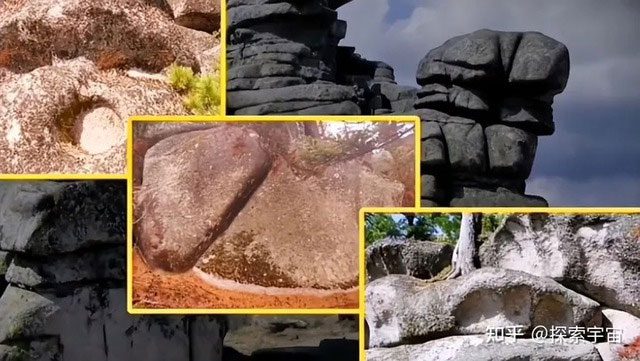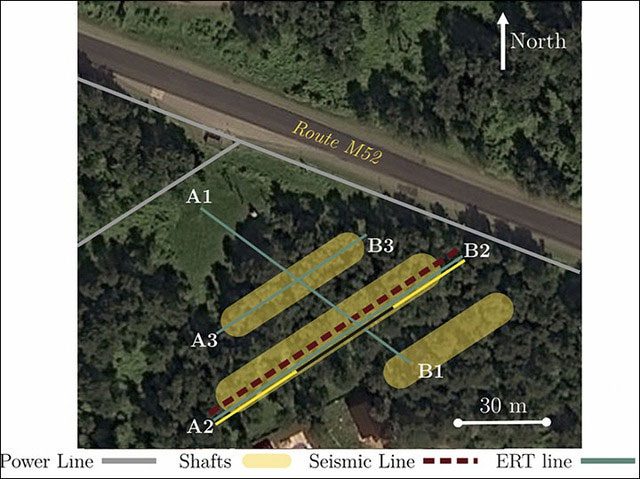Siberia – a vast land in the north of Russia, commonly known for its frigid climate and desolate terrain. However, in recent years, explorers and archaeologists have uncovered astonishing ruins in this region that shed light on its history and culture.
These ruins may reveal the existence of an unknown ancient civilization. These mysterious relics are the massive stone walls of Siberia, which are scattered across various areas of Siberia, some towering dozens of meters high, some stretching 200 meters long, taking on different shapes, from round to square, and even exhibiting complex patterns.
Many are intrigued by how these stone walls were constructed. What secrets lie behind them? These questions have long puzzled researchers and explorers and continue to attract the attention of many.

Explorers discovered ancient stone walls from the 19th century. (Illustrative image).
As early as the 19th century, some Russian explorers and geologists discovered traces of stone walls in the mountainous and forested regions of Siberia. For instance, in 1853, Russian geologist Kovalevsky found remnants of several stone walls in the Altai Mountains of Siberia, believing these stone walls to be ancient fortifications.
In 1886, Russian explorer Prevalsky discovered several circular stone walls in the Sayan Mountains of Siberia, theorizing that these walls were ancient observatories or sundials.
In 1891, Russian geographer Obruchev found several square stone walls near Lake Baikal in Siberia, believing them to be ancient cemeteries or temples. However, the scientific community at the time paid little attention to these early discoveries, as the prevailing view suggested that prehistoric Siberia was sparsely populated, and a highly developed civilization could not have existed. These stone walls were regarded as natural wonders or crude constructions by nomadic tribes, thus holding little value in scientific research.

These walls were designed and constructed meticulously. (Illustrative image).
However, over time, as exploration in Siberia advanced, more stone walls were discovered, sparking interest among some researchers. Utilizing modern technology and methods, they conducted detailed measurements and analyses of these stone walls, uncovering some shocking truths.
Recent studies indicate that these stone walls are not natural formations or simple constructions by farmers, but were carefully designed and built. Their size and structural complexity suggest that an advanced ancient civilization may have existed behind them.
Even more shocking is the weight of the stones. Researchers estimate that some granite blocks weigh over 3,000 tons, and many stones are neatly cut with “flat surfaces, right angles, and sharp edges.” Such colossal stones have never been found before.
The largest stones found in the ruins of Baalbek, Lebanon, do not exceed 1,500 tons. So how did the builders of these massive stones precisely cut 3,000 tons of granite and transport them to the mountains, stacking them up to heights of 40 meters?

The surface of some stones has melted due to high temperatures, creating soft traces. (Illustrative image).
Researchers also discovered some astonishing phenomena during their investigations, revealing more mysteries about the stone region. They found that the surface of some stones had melted due to high temperatures, creating soft traces, and some stones had been heavily damaged, as if an ancient battle had occurred here.
What is particularly surprising is that the compass the team carried deviated without clear reason in the stone area. Researchers speculate that this is due to the magnetic properties of these stones, which affect the local geomagnetic field. This phenomenon closely resembles what is found at Puma Punku, where most stones exhibit magnetic properties.
Regarding the damage to these stones, people began to wonder what kind of force could cause such immense damage. After all, granite is a very hard rock, resistant to harsh weather, and is not easily chipped. This raises the question of who actually built these ruins. Why did they choose to construct such monolithic structures in a remote mountainous region with such a harsh climate? An interesting point raised by some scholars is that the region with the monolithic stones was not always known for its harsh climate.

Scientists have found numerous woolly mammoth remains in Siberia. (Illustrative image).
During the ice age around 20,000 years ago, this area may have been inhabited by humans. Although ice covered much of the northern hemisphere, the climate in southern Siberia was relatively mild, characterized by vast grasslands with various herbaceous plants, and was home to many gigantic animals such as woolly mammoths and giant rhinoceroses.
In fact, a large number of woolly mammoth remains have been found in the permafrost of Siberia. The mouths and stomachs of these mammoths also contained undigested food from plants that grew in temperate and even subtropical regions. Researchers believe that these mammoths experienced a sudden flood and were then frozen in a very short time.
In recent decades, several ancient architectural structures have been discovered in Siberia. Notably, in 2020, dozens of giant mammoth bone circles were discovered on the western bank of the Don River, about 500 kilometers south of Moscow. These bone circles were assembled from a large number of mammoth bones.

House made from mammoth bones. (Illustrative image).
Researchers estimate that each bone circle would require at least several hundred mammoth bones. These massive structures were so heavy that a modern crane was needed to transport them. Radiocarbon dating indicates that these structures date back approximately 20,000 years.
After thoroughly studying these bone circles, scholars proposed a shocking idea that ancient humans hunted hundreds of woolly mammoths and used their remains as building materials to enclose them and create architectural structures. A significant amount of charcoal was also found at the center of the bone circles, suggesting that ancient humans used fire for warmth in these peculiar structures, and these bone circles served as their winter shelters.

These ruins are so heavy that a crane was needed to transport them. (Illustrative image).
The megaliths in Siberia indicate they are products built by humans during the last Ice Age. The builders may have belonged to a forgotten advanced civilization. However, as the Ice Age came to an end, their environment changed dramatically, and just like the extinction of the woolly mammoth, they too suffered a devastating blow. Their civilization faded into the long river of history, leaving behind only some mysterious remnants awaiting future generations to explore and interpret.


















































